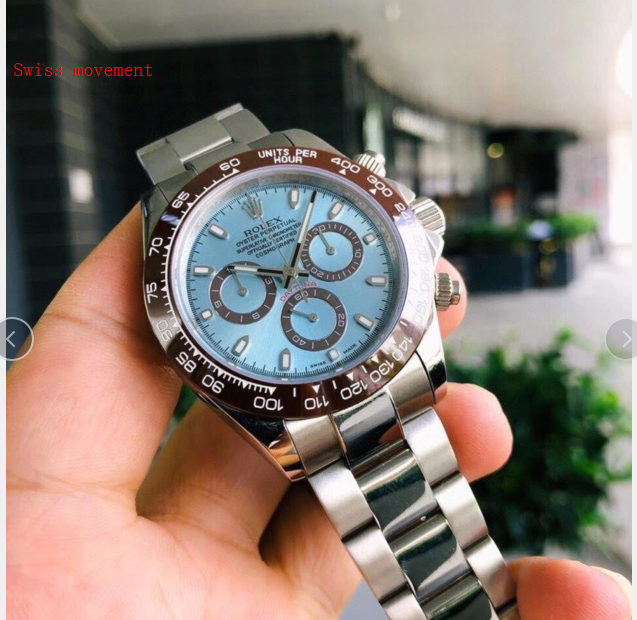Replica Rolex watches offer an affordable alternative to the prestigious and often prohibitively expensive genuine Rolex watches. However, those venturing into the world of replicas quickly discover a wide range of prices, from less than $100 to over $1,000. This significant variation in price is influenced by several factors, including the quality of materials used, the precision of craftsmanship, the complexity of the movement, and the overall accuracy in replicating the original Rolex design.
1. Quality of Materials
Metal Quality
- Stainless Steel: High-quality replicas often use 316L or 904L stainless steel, similar to genuine Rolex watches. This material is durable, corrosion-resistant, and closely matches the finish and feel of the original. Lower-end replicas might use inferior metals or alloys, which can affect the watch’s durability and appearance.
- Gold Plating and Precious Metals: Replicas that feature gold plating or other precious metals vary widely in quality. Premium replicas use thick, high-quality gold plating or solid materials that closely mimic the original Rolex. Cheaper versions may use thin, easily worn plating or low-grade metals that quickly lose their luster.
Crystal Quality
- Sapphire Crystal: Higher-priced replicas often use sapphire crystal, which is scratch-resistant and highly durable. This material is used in genuine Rolex watches and offers superior clarity and longevity. Less expensive replicas may use mineral glass or even plastic, which are more prone to scratches and damage.
Bracelet and Clasp Quality
- Bracelet Construction: Premium replicas feature solid link bracelets with precise finishing, mimicking the genuine Rolex bracelets’ robustness and comfort. Lower-end replicas might use hollow links or poorly constructed bracelets, which can feel flimsy and wear out quickly.
- Clasp Mechanism: The clasp on a high-quality replica will closely replicate the secure, smooth, and durable mechanism of an authentic Rolex. Cheaper replicas often have less reliable clasps that may fail or wear out over time.
2. Precision of Craftsmanship
Detailing and Finish
- Case and Dial: Higher-end replicas are crafted with meticulous attention to detail. This includes the precision of the engravings, the alignment of the dial elements, and the overall finish. These details are crucial in making a replica look and feel like a genuine Rolex. Inexpensive replicas may have noticeable imperfections, such as misaligned markers, poorly printed logos, or rough finishing.
- Bezel and Crown: The rotating bezels on models like the Submariner and GMT-Master require precise engineering to function correctly and feel authentic. High-quality replicas replicate this functionality and feel. Lower-priced versions may have bezels that are purely decorative or poorly engineered.
Weight and Balance
- Authentic Feel: A genuine Rolex has a distinct weight and balance due to its use of high-quality materials and precise construction. Top-tier replicas strive to match this by using similar materials and construction techniques. Cheaper replicas often feel lighter and less substantial, which can be a giveaway of their inferior quality.
3. Movement Complexity and Quality

Swiss vs. Japanese Movements
- Swiss Movements: Swiss ETA movements are considered the gold standard in replica watches. These movements are highly accurate, reliable, and closely mirror the movements found in genuine Rolex watches. They contribute significantly to the higher cost of premium replicas.
- Japanese Movements: Japanese movements, such as those from Miyota, offer a good balance between quality and affordability. They are reliable and accurate but may lack the precision and smooth operation of Swiss movements. Consequently, replicas with Japanese movements are usually mid-range in price.
- When choosing a replica Rolex, understanding these factors can help you find the right balance between your budget and the level of quality and authenticity you desire.
